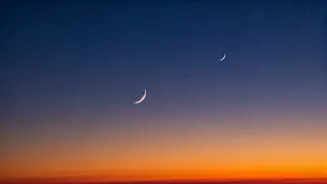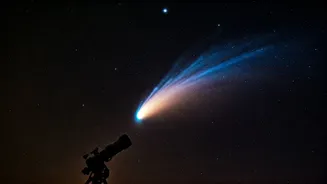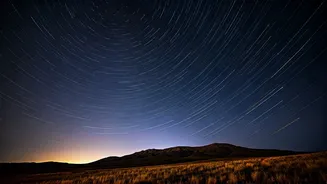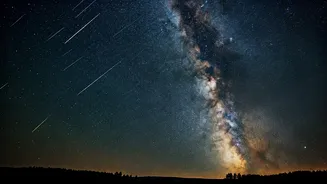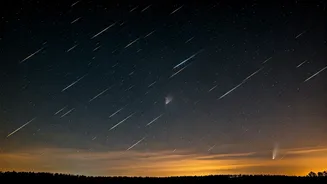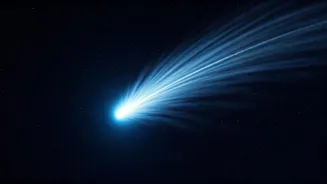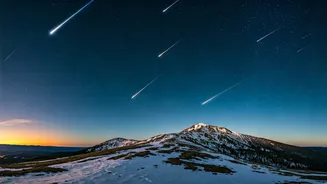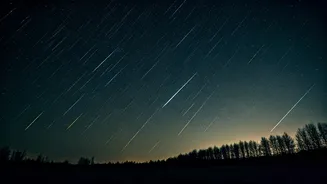Venus's Prime Visibility
Venus often reaches its highest point in the pre-dawn sky, becoming a stunning sight for observers. This visibility is most notable in the eastern sky before
sunrise. The planet’s brilliance stems from its dense atmosphere, which reflects a significant amount of sunlight. This makes it easily recognizable and the third brightest object in the sky, after the Sun and Moon. Viewing Venus during this time offers a unique opportunity to appreciate its radiant beauty and understand its movements relative to the Earth. The timing of its peak visibility shifts, but generally, it can be spotted several times each year during specific periods, like August, and throughout other months when the orbital positions align favorably for observation from our planet.
Joining the Celestial Dance
Venus frequently participates in conjunctions, partnering with the Moon and other planets. Observing these events offers a captivating spectacle. In these close encounters, the Moon, Venus, and occasionally other planets such as Jupiter and Mercury, align to create striking visual arrangements. These celestial alignments are not just visually pleasing; they help astronomers and casual observers better understand planetary orbits and celestial mechanics. Such events can be observed in the predawn sky, enhancing the visual experience with the Moon's soft glow. Furthermore, conjunctions with bright stars, like those in the Gemini constellation or Spica, add to the visual appeal, providing unique stargazing opportunities.
Spotting Venus Easily
Identifying Venus in the pre-dawn sky requires some basic guidance, as its bright appearance makes it relatively simple to spot. Look towards the eastern horizon before sunrise to start. Venus shines with an unwavering brilliance that distinguishes it from most stars. The planet is often visible for a couple of hours before the sun rises, giving ample time for observation. Using a stargazing app or a basic sky map can also aid in pinpointing Venus's precise location and predicting its movements. It's often close to the ecliptic, the path of the Sun, making its location predictable. By knowing when and where to look, anyone can witness the celestial show Venus puts on.
Seasonal Viewing Tips
The best times to view Venus shift throughout the year, depending on its orbital position relative to Earth. The planet's position changes and its appearance varies during different seasons. For instance, in August, Venus is well-placed in the pre-dawn sky. However, the exact dates and times can vary each year. To maximize viewing opportunities, it’s advisable to consult a reliable astronomical calendar or skywatching guide. These resources provide details of specific dates and times when Venus is at its most visible or involved in interesting conjunctions. Furthermore, the use of binoculars or a small telescope can reveal more details about Venus, such as its phases, similar to those of the Moon.
Venus's Significance
The study and observation of Venus contribute significantly to our understanding of the solar system. Observing Venus in the sky reminds us of the larger context of our place in the universe. Beyond its aesthetic appeal, Venus has been a target of scientific study for decades. Space missions have revealed a harsh atmosphere and extreme surface temperatures. Observing Venus, especially during notable events like conjunctions, also encourages engagement with astronomy and the wonders of the cosmos. For many, stargazing is more than a hobby; it offers a deeper sense of connection to the universe, reminding us of the scale and beauty that surrounds us.
